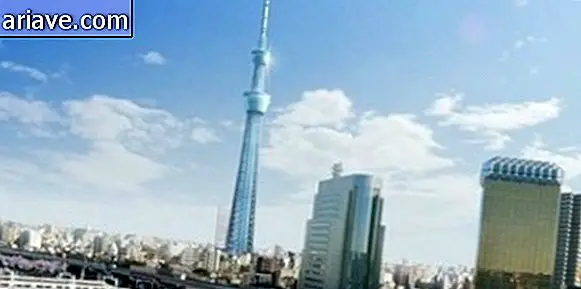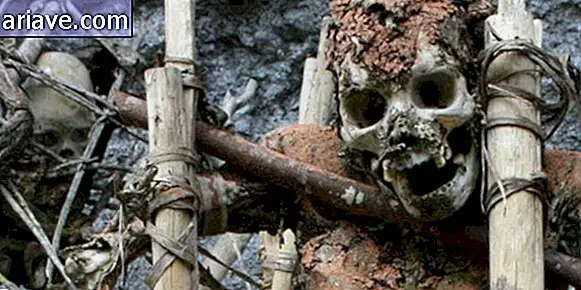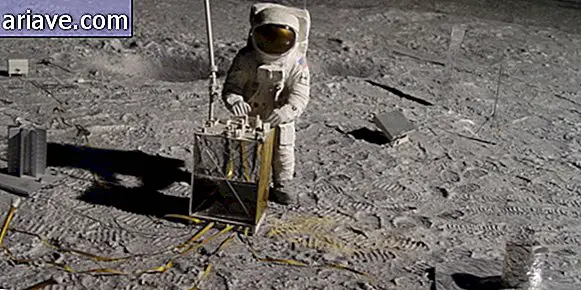4 fascinating Ethiopia-related things you need to check out
In addition to being the second most populous nation in Africa, with over 112.5 million inhabitants, being one of the oldest countries in the world and possibly home to the legendary “Ark of the Covenant”, Ethiopia has many other attractions, including: the ones we listed below - selected from an article published by Jana Louise Smit from the ListVerse website. Check out:
1 - Expressions of Christianity
Did you know that Ethiopia is home to the earliest known Christian artifact? This is a manuscript known as the "Gospels of Garima, " which consists of a document containing drawings related to Christianity, which was written by a monk named Abba Garima between the 5th and 6th centuries.

According to legend, the religious would have created the material in a single day, soon after founding a monastery - the Garima Monastery - where the document has been kept since its creation. The manuscript was all written in Ge'ez, an ancient Ethiopian parchment dialect, and it was long believed that the artifact had actually been produced in the 11th century.

However, analyzes conducted on the material and radiocarbon dating revealed that the document was created between 330 and 640, making the Garima Gospels possibly the relic containing illustrations of the earliest Christianity ever found in the world.
2 - Taken from oblivion
We know that Africa was the cradle of human civilization, but did you know that the continent would also harbor giant beings? Or at least that's what a legend goes around in eastern Ethiopia. The myth arose from ruins made up of huge stone blocks found near Harlaa, arousing the imagination of the area's inhabitants, but obviously the site was not built by colossal people, not ...

Named the “Forgotten City of Harlaa, ” the site was once an old acquaintance of scientists, but it was only properly explored by archaeologists a couple of years ago, and numerous artifacts and buildings were discovered there. The town probably flourished during the 10th century, and in addition to discovering objects from China and India, researchers found evidence that there was a strong Islamic presence in the region.

Traces were also found to indicate that the city received people from Tanzania, Maldives, Madagascar, Egypt, Yemen and Somaliland, leading archaeologists to conclude that the Forgotten City of Harlaa, in addition to being a major regional trade center, was a place that harbored a great deal of cultural diversity and was part of a network of Muslim communities in Africa.
3 - Human ancestors
And since we're talking about human occupation in the past, it was in Gona, Ethiopia that some of the oldest pieces produced by our ancient ancestors were found. More specifically, in 2003, a team of archaeologists found a collection of stone artifacts about 2.6 million years ago - items that held the title of “tools made by the earliest known human ancestors” over several years. years.

The collection only lost its post in 2015, after other artifacts were found in Kenya and dated to 3.3 million years old. These items, in fact, were created long before the emergence of the genus Homo and, according to scientists, it is possible that these pieces were created by hominids of the genus Australopithecines or of the order Kenyanthropus .
4 - Colored Fonts
Volcanoes can be incredibly dangerous and destructive, but they are also capable of creating beautiful and surreal landscapes. One of these "artists" of nature is Dallol, located about 600 kilometers from the Ethiopian capital Addis Ababba and, despite having produced a risky area, the volcano attracts brave visitors every year.

In the vicinity of Dallol there are numerous bubbling springs, geysers, puddles filled with acidic substances and fumaroles that release toxic gases. But the colors that the chemical compounds that lie beneath the surface and spew out from the volcano create a unique landscape full of color and contrast.

What happens there is that the magma ends up heating the groundwater and when the liquid begins to rise to the surface, it dissolves minerals such as potassium, sulfur and iron oxide. Afterwards, the water ends up accumulating inside craters, but the arid and hot climate causes much of it to evaporate, and the result is the “pools” with the colors you saw in the images.











